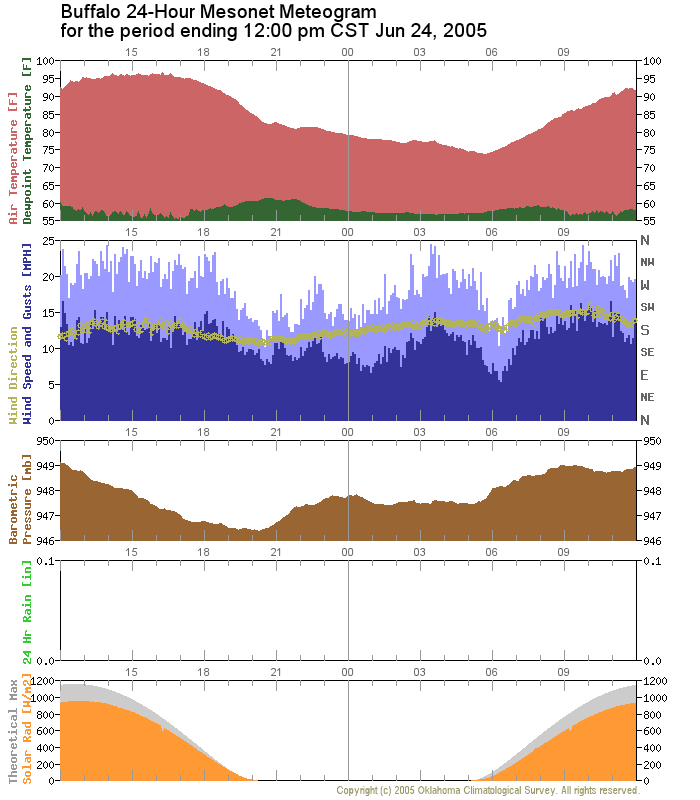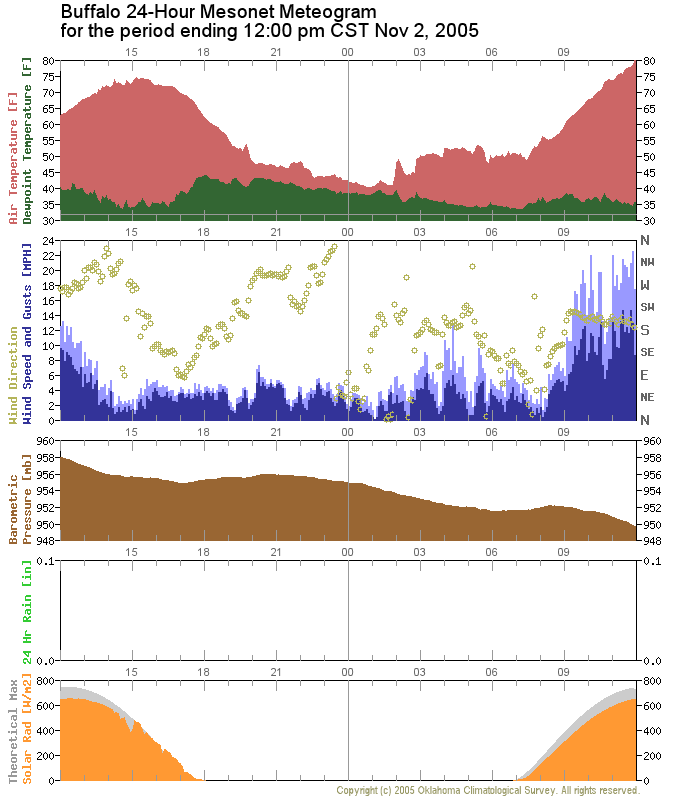Ticker for November 2, 2005
MESONET TICKER ... MESONET TICKER ... MESONET TICKER ... MESONET TICKER ...
November 2, 2005 November 2, 2005 November 2, 2005 November 2, 2005
It's All About the Angle
A kindly ridge cleared Oklahoma's skies today, and graced us with
one of those notably pleasant shirt-sleeves November afternoons.
The same feature, in July, would not be described with such
affectionate terms. The nomenclature for summertime ridges includes
such words as "brutal", "oppressive" and a few more we can't print
on our servers.
It's the same Sun with the same wide-open window through which to
shine brightly. Truth be told, we're even closer to the Sun than
we were in July. On July 5th, we were farther from the Sun than
on any other day this year.
The answer lies not in the Sun's weakness, but its obliqueness.
Our half of the globe is now pointed away from the slightly-nearer
sun, causing three notable effects:
1. Our days are much shorter.
2. The sun rises much lower in the sky, and its rays strike us
at a more oblique angle.
3. The oblique angle also dictates that the rays must pass through
more of the earth's atmosphere, which absorbs and scatters
incoming energy.
Here are some meteograms from the Buffalo Mesonet site. The first
shows data from late June, and the second uses today's data:


Note the solar radiation values (orange trace). In June, the site
recorded up to 1000 W/m2 of sunlight during the afternoon. Today's
meteogram, taken in equally clear skies, shows a maximum solar value
of about 600 W/m2. That 40% drop in the maximum value and the 30%
drop in length-of-day are major reasons that today's temperatures
will peak in the "pleasant", rather than "oppressive", category.
Incidentally, the date that the Earth passes closest to the Sun is
ever-evolving. This cyclic and predictable orbital process is called
precession. Eventually, the earth will pass closest to the Sun during
our summer months. All other orbital factors being equal (which they
won't be), this would cause slightly warmer summers and slightly
colder winters for the northern hemisphere. If you're around in
eleven thousand years, look for this effect!
November 2 in Mesonet History
| Record | Value | Station | Year |
|---|---|---|---|
| Maximum Temperature | 93°F | BURN | 2017 |
| Minimum Temperature | 15°F | KENT | 2004 |
| Maximum Rainfall | 4.12″ | HOLL | 2024 |
Mesonet records begin in 1994.
Search by Date
If you're a bit off, don't worry, because just like horseshoes, “almost” counts on the Ticker website!